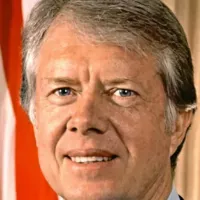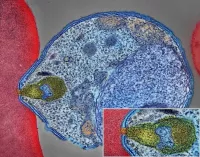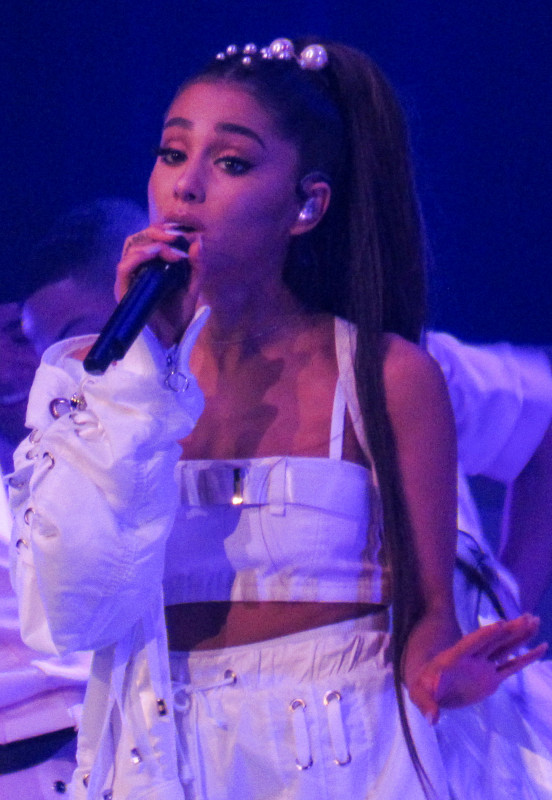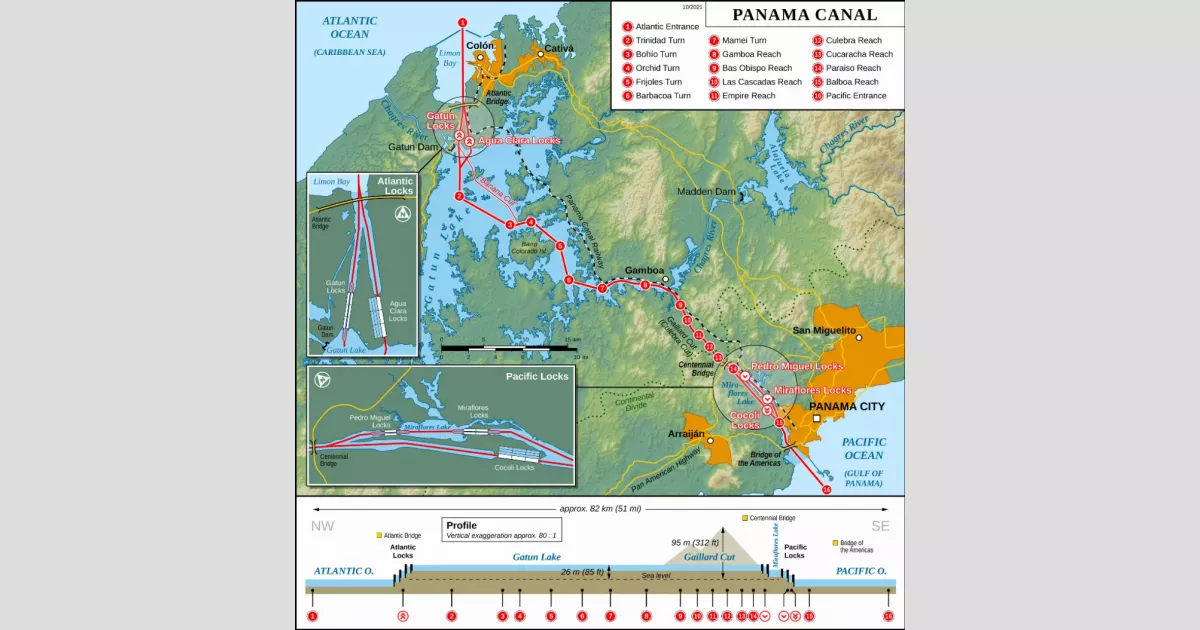The Panama Canal is an 82-kilometer artificial waterway connecting the Atlantic and Pacific Oceans via the Isthmus of Panama. It uses a series of locks to raise ships to Gatun Lake, a man-made freshwater lake, before lowering them on the other side. This allows maritime trade to bypass the lengthy and hazardous route around South America. An average of 200 million liters of freshwater are used per ship passage. Drought conditions and low water levels pose a threat to its operations.
November 21, 1901: Walker Commission Issues Preliminary Report
On November 21, 1901, the Walker Commission issued a confidential preliminary report favoring the Nicaragua route for the canal due to pricing; the Panama route's informally quoted price was considered excessive.
January 1902: Roosevelt Seeks Personal Evaluations of Canal Route
In January 1902, President Roosevelt individually consulted Walker Commission members and later held a closed meeting, indicating his preference for accepting the Panama route offer.
June 1902: US Senate Voted in Favor of Spooner Act
In June 1902, the US Senate voted in favor of the Spooner Act to pursue the Panamanian option for the canal, provided the necessary rights could be obtained.
1902: SS Tremont launched
In 1902 the SS Tremont, later renamed SS Cristobal, was launched. This cargo and passenger ship was the first ship to transit the Panama Canal from ocean to ocean in 1914.
January 1903: Hay–Herrán Treaty Signed
In January 1903, the Hay–Herrán Treaty was signed by United States Secretary of State John M. Hay and Colombian Chargé Tomás Herrán. It would have granted the United States a renewable lease in perpetuity from Colombia on the land proposed for the canal for $10 million and an annual payment.
March 1903: US Senate Ratifies Hay-Herrán Treaty
On March 14, 1903, the US Senate ratified the Hay–Herrán Treaty; however, the Senate of Colombia unanimously rejected the treaty due to concerns over compensation, sovereignty, and perpetuity.
November 1903: US Warships Block Sea Lanes, Panama Declares Independence
On November 2nd, 1903, US warships blocked sea lanes against possible Colombian troop movements en route to put down the Panama rebellion, and on November 3rd, 1903 Panama declared independence. The United States quickly recognized the new nation.
November 1903: Hay-Bunau-Varilla Treaty Signed
On November 6, 1903, the Hay–Bunau-Varilla Treaty was signed, granting rights to the United States to build and administer the Panama Canal Zone and its defenses. This treaty gave the US some rights to the canal "in perpetuity", but in article 22 limited other rights to a lease period of 99 years.
1903: US Support to Panama seen as Act of Conquest
Following the revolution in 1903, the New York Times described the support given by the United States to Bunau-Varilla as an "act of sordid conquest". The New York Evening Post called it a "vulgar and mercenary venture".
May 1904: US Formally Takes Control of Canal Property
On May 4, 1904, the US formally took control of the Panama Canal property. The Isthmian Canal Commission (ICC) was established to oversee construction and was given control of the Panama Canal Zone.
May 1904: John Findley Wallace Appointed Chief Engineer
On May 6, 1904, President Theodore Roosevelt appointed John Findley Wallace as chief engineer of the Panama Canal Project.
1904: Gorgas appointed chief sanitation officer
In 1904, Colonel William C. Gorgas was appointed as the chief sanitation officer for the Panama Canal construction project. He implemented extensive sanitation projects to combat mosquito-borne diseases like yellow fever and malaria, which included city water systems, fumigation, spraying insect-breeding areas, mosquito netting, and eliminating stagnant water.
1904: US Purchases French Equipment and Excavations
In 1904, the United States purchased the French equipment and excavations, including the Panama Railroad, for US$40 million. The United States also paid the new country of Panama $10 million and a $250,000 payment each following year.
June 1905: John Findley Wallace Resigns, Theodore P. Shonts and John Frank Stevens Appointed
In June 1905, John Findley Wallace resigned as chief engineer of the Panama Canal Project. Theodore P. Shonts was then brought on as the new chairman of the ICC, and John Frank Stevens was appointed as the new chief engineer.
1905: US engineering panel reviews canal design
In 1905, a US engineering panel was commissioned to review the design of the Panama Canal, which had not been finalized at the time.
January 1906: Engineering panel recommends sea-level canal
In January 1906, a US engineering panel recommended a sea-level canal to President Roosevelt. However, Stevens argued for a lock system using Gatun Lake, convincing Roosevelt of its feasibility and necessity.
1907: Stevens resigns as chief engineer
In 1907, Stevens resigned from his position as chief engineer for the Panama Canal project, and US Army Major George Washington Goethals was appointed by President Theodore Roosevelt as his replacement.
1907: Inauguration of original Tehuantepec Railway
In 1907, the original Tehuantepec Railway, which is being rehabilitated for the CIIT, was inaugurated, achieving initial success before declining due to the Mexican Revolution and the opening of the Panama Canal.
1908: Navy requests wider locks
In 1908, the United States Navy requested that the width of the Panama Canal locks be increased to at least 36 meters to accommodate large warships. A compromise was made, and the locks were built 33.53 meters wide.
1912: Controversy about canal tolls
In 1912, a controversy arose regarding the tolls charged for using the Panama Canal.
October 1913: Gamboa Dike destroyed, linking oceans
On 10 October 1913, President Woodrow Wilson remotely triggered the explosion that destroyed the Gamboa Dike, flooding the Culebra Cut and linking the Atlantic and Pacific oceans via the Panama Canal.
1913: Gatun Lake created
Created in 1913 by damming the Chagres River, Gatun Lake is a key part of the Panama Canal, providing water to operate its locks. At the time of its formation, Gatun Lake was the largest human-made lake in the world.
January 1914: Alexandre La Valley transits the canal
On 7 January 1914, the Alexandre La Valley, a self-propelled floating crane, became the first vessel to transit the Panama Canal from the Atlantic to the Pacific Ocean.
August 15, 1914: Inauguration of the Panama Canal
On August 15, 1914, the Panama Canal was inaugurated. This event shortened maritime communication by providing a relatively inexpensive transit route between the Atlantic and Pacific oceans, influencing global trade patterns and boosting economic growth.
August 1914: First toll received for pleasure boat
On 14 August 1914, Morgan Adams' boat, Lasata, became the first pleasure boat to pay a toll to the US government for using the Panama Canal, during a voyage from Jacksonville, Florida, to Los Angeles.
August 1914: Panama Canal formally opens
On 15 August 1914, the Panama Canal was formally opened with the passage of the cargo ship SS Ancon. The United States spent almost $500 million to complete the project, making it the largest American engineering project to date.
August 1914: SS Cristobal transits the canal
On 3 August 1914, the SS Cristobal became the first ship to transit the Panama Canal from ocean to ocean.
1914: Goethals completes Panama Canal construction
In 1914, US Army Major George Washington Goethals successfully directed the completion of the Panama Canal construction project, two years ahead of schedule.
1914: Controversy about canal tolls
In 1914, a controversy arose regarding the tolls charged for using the Panama Canal.
1914: Steam shovels used in Chilean copper mine
In 1914, steam shovels from the Panama Canal construction were purchased and put to use in the Chuquicamata copper mine of northern Chile.
1914: Opening of the Panama Canal
In 1914, the United States opened the Panama Canal, marking the completion of the project.
1914: Drop in traffic along Chilean ports
In 1914, the opening of the Panama Canal caused a severe drop in traffic along Chilean ports due to shifts in maritime trade routes.
1914: Canal Opens with 1,000 Ships
In 1914, when the Panama Canal opened, approximately 1,000 ships transited the canal.
1914: Panama Canal completion
Since its completion in 1914, the Panama Canal has been a vital conduit for global trade by linking the Atlantic and Pacific Oceans, reducing maritime travel time and costs.
September 1915: Canal closure due to landslide
On 18 September 1915, the Panama Canal was closed for nearly seven months after a landslide in the Culebra Cut.
June 1916: Original target date for completion
The original target date for completion of the Panama Canal was June 1916, before Goethals directed the work to a successful conclusion in 1914.
1928: Lowest toll ever paid
In 1928, American Richard Halliburton paid the lowest toll ever of 36 cents (equivalent to $6.59 in 2024) for swimming the Panama Canal.
1928: USS Saratoga damages canal lamp posts
In 1928, during USS Saratoga's first transit through the Gatun Locks, the aircraft carrier knocked over concrete lamp posts along the canal due to its protruding flight decks, showcasing the Panama Canal pilots' initial inexperience with handling aircraft carriers.
1934: Estimated maximum capacity in 1934
In 1934, it was estimated that the maximum capacity of the Panama Canal would be around 80 million tons per year.
1935: Madden Dam completed
In 1935, the Madden Dam was completed across the Chagres River above Gatun Lake, creating Madden Lake (later Lake Alajuela) to provide additional water storage for the Panama Canal.
1939: End of US Protectorate over Panama
After the revolution in 1903, the Republic of Panama became a US protectorate until 1939.
1939: Third Lock Scheme of 1939
An enlargement scheme to allow for a greater number of transits and the ability to handle larger ships, similar to the Third Lock Scheme of 1939, had been under consideration for some time.
1956: Increased demands for Panamanian control
Following the Suez Crisis in 1956, demands increased for the United States to hand over the Panama Canal to Panama.
January 1964: Martyr's Day riots
In January 1964, Panamanian unrest culminated in riots on Martyr's Day, resulting in the deaths of about 20 Panamanians and 3–5 US soldiers. This event increased tensions over US control of the Canal Zone.
1974: Negotiations for a settlement begin
In 1974, negotiations began toward a settlement regarding the Panama Canal, eventually leading to the Torrijos–Carter Treaties.
September 1977: Torrijos–Carter Treaties signed
On 7 September 1977, the Torrijos–Carter Treaties were signed by President Jimmy Carter of the United States and Omar Torrijos of Panama, initiating the process of granting Panama control of the Panama Canal.
1977: Torrijos-Carter Treaties Provide for Handover to Panama
In 1977, the Torrijos-Carter Treaties provided for the handover of the Panama Canal to Panama from the United States.
1977: Torrijos-Carter Treaties
In 1977, the Torrijos-Carter Treaties were met with fears that efficiency and maintenance of the Panama Canal would decline following the US withdrawal.
1978: Researchers warn of deforestation impact
In 1978, researchers warned that deforestation in the Panama Canal drainage basin could "kill the canal" due to its impact on water levels and overall ecosystem health.
1985: Forested area drops
By 1985, the forested area in the Panama Canal drainage basin had dropped to 30%, highlighting the ongoing issue of deforestation.
1986: Crude oil spill pollutes water
In 1986, a crude oil spill occurred east of the Caribbean entrance to the Panama Canal, resulting in the death of plants and invertebrates in the area.
1989: US invasion of Panama
In December 2010, the Panama Canal experienced its first closure since the US invasion of Panama in 1989, due to record-breaking rains.
1989: Completion of Berendrecht Lock
The Berendrecht Lock, a design copy for the new Panama Canal locks, was completed in 1989 by the Port of Antwerp with help from De Nul.
December 1999: Full Panamanian control of the canal
On 31 December 1999, Panama gained full control of the Panama Canal, with the Panama Canal Authority (ACP) assuming command of the waterway.
1999: Panama Takes Control of the Canal
In 1999, the Panamanian government took full control of the Panama Canal after a period of joint American-Panamanian control.
1999: Tonnage carried in 1999
In fiscal year 1999, the Panama Canal carried a total tonnage of 227.9 million PC/UMS tons.
1999: Canal transferred to Panama
Since the Panama Canal's transfer from the United States to Panama in 1999, revenues have been reinvested into national development projects, including ports, logistics hubs, and free trade zones, boosting Panama's GDP growth and infrastructure development.
2000: ACP developed a sustainable expansion program
As a signatory to the 2000 United Nations Global Compact and member of the World Business Council for Sustainable Development, the ACP developed an environmentally and socially sustainable program for the Panama Canal expansion, which protects the aquatic and terrestrial resources of the canal watershed.
2000: Deforestation continues to harm ecosystem
As of 2000, deforestation, driven by human population growth, land degradation, and erosion, continued to harm the ecosystem around the Panama Canal, affecting the water-holding capacity of Gatún and Alajuela Lakes.
2000: Ships successfully cross Arctic route
Since 2000, a few ships have successfully crossed the previously impassable Arctic route due to climate change thinning the ice, with satellite navigation aiding transit.
2003: Ocean-going transits in 2003
In 2003, the total number of ocean-going transits was 11,725.
2004: Improved operations under Panamanian control
In 2004, it was reported that Panama Canal operations were improving under Panamanian control, capitalizing on practices developed during the American administration.
2005: Traffic projection
The project was designed to allow for an anticipated growth in traffic from 280 million PC/UMS tons in 2005 to nearly 510 million PC/UMS tons in 2025.
April 2006: Raffaele Minotauro Awarded Panama Canal Honorary Pilot
On 25 April 2006, Senior Captain Raffaele Minotauro, of the former Italian Line, was awarded the title of Panama Canal Honorary Pilot.
August 2006: Highest fee for priority passage charged
In August 2006, the Panamax tanker Erikoussa paid US$220,300 through the Transit Slot Auction System for priority passage, bypassing a 90-ship queue and avoiding a seven-day delay due to maintenance on the Gatun Locks; the normal fee would have been US$13,430.
October 2006: Expansion proposal approved
On 22 October 2006, a Panama Canal expansion proposal, with a cost estimate of US$5.25 billion, was approved in a national referendum by about 80 percent.
2006: Anticipation of larger container ships
In 2006, it was anticipated that by 2011, 37 percent of the world's container ships would be too large for the present Panama Canal, necessitating changes to retain market share.
February 2007: Article in Popular Mechanics magazine
An article in the February 2007 issue of Popular Mechanics magazine described the engineering aspects of the Panama Canal expansion project.
September 2007: Construction of Third, Wider Lane of Locks Begins
In September 2007, construction began on a third, wider lane of locks for the Panama Canal to accommodate larger ships.
September 2007: Launch of Expansion Program
On 3 September 2007, thousands of Panamanians witnessed the initial explosion and launch of the Panama Canal Expansion Program from Paraíso Hill in Panama.
2007: Ocean-going transits and tonnage increase
In 2007, the total number of ocean-going transits through the Panama Canal increased to 13,233, and the total tonnage carried reached a then record high of 312.9 million PC/UMS tons.
2007: Significant increase in passenger vessel tolls
Starting in 2007, the fee structure for passenger vessels transiting the Panama Canal greatly increased the tolls for such ships.
2007: Canal expansion construction began
The construction of the Panama Canal expansion began in 2007 and continued until 2016.
2008: Canal Traffic Reaches 14,702 Vessels
By 2008, annual traffic through the Panama Canal had risen to 14,702 vessels, totaling 333.7 million Panama Canal/Universal Measurement System (PC/UMS) tons.
2008: Capacity of the Panama canal in 2008
In 2008, improvements enlarged the Panama canal's capacity to 300 million PCUMS.
July 2009: Contract awarded to build new locks
In July 2009, the contract to build the six new locks for the Panama Canal was awarded to the Belgian dredging company Jan De Nul, together with a consortium of contractors.
2009: Ocean-going transits and tonnage fall
In 2009, the total number of ocean-going transits through the Panama Canal fell to 12,855, and the total tonnage carried fell to 299.1 million tons.
2009: Anticipation of reaching capacity
It was anticipated that the maximum sustainable capacity of the original Panama Canal, estimated at 340 million PC/UMS tons per year, would be reached between 2009 and 2012.
February 2010: Follow-up article in Popular Mechanics magazine
There is a follow-up article about the Panama Canal expansion project in the February 2010 issue of Popular Mechanics magazine.
April 2010: Most expensive regular toll charged
In April 2010, the cruise ship Norwegian Pearl was charged US$375,600, marking the most expensive regular toll for a Panama Canal passage to date.
December 2010: Canal closure due to record rains
In December 2010, record-breaking rains caused a 17-hour closure of the Panama Canal, the first closure since the US invasion of Panama in 1989; the rains also caused an access road to the Centenario Bridge to collapse.
2011: Projected percentage of larger container ships
By 2011, it was anticipated that 37 percent of the world's container ships would be too large for the present Panama Canal.
2011: Colombia proposes railway between coasts
In 2011, Colombia's then-president Juan Manuel Santos announced a proposal for a 220 km railway between Colombia's Pacific and Caribbean coasts.
June 2012: Completion of reinforced concrete monolith
By June 2012, a 30 m reinforced concrete monolith, the first of 46, had been completed, lining the new Pacific-side lock walls of the Panama Canal expansion.
July 2012: Canal expansion behind schedule
By early July 2012, it was announced that the Panama Canal expansion project had fallen six months behind schedule, with expectations for the expansion to open in April 2015 instead of October 2014.
2012: Capacity of the Panama canal in 2012
By 2012, improvements had increased the capacity of the Panama Canal to 340 million PCUMS.
2012: Anticipation of reaching capacity
It was anticipated that the maximum sustainable capacity of the original Panama Canal, estimated at 340 million PC/UMS tons per year, would be reached between 2009 and 2012.
June 2013: Nicaragua canal concession awarded
On 15 June 2013, Nicaragua awarded the Hong Kong-based HKND Group a 50-year concession to develop a canal through the country as an alternative route.
2013: Tonnage and transits in 2013
In fiscal year 2013, the Panama Canal carried 320.6 million PC/UMS tons on 13,660 transits.
January 2014: Contract dispute threatens project
In January 2014, a contract dispute threatened the progress of the Panama Canal expansion project.
June 2014: Work reaches goals despite contract dispute
By June 2014, the Panama Canal expansion project work by the consortium members had reached goals, following a delay of less than two months due to a contract dispute.
July 2014: Route approved for Nicaragua's proposed canal
On 7 July 2014, Wang Jing of HKND Group announced that a route for Nicaragua's proposed canal had been approved, with construction projected to begin in 2014 and last five years.
September 2014: New gates projected to be open
By September 2014, the new gates of the Panama Canal were projected to be open for transit at the "beginning of 2016".
October 2014: Original projected opening date
By early July 2012, the Panama Canal expansion project had fallen six months behind schedule, leading to expectations for the expansion to open in April 2015 instead of October 2014.
2014: Commodore Ronald Warwick awarded Panama Canal Honorary Pilot
In 2014, Commodore Ronald Warwick, former Master of the Cunard Liners Queen Elizabeth 2 and RMS Queen Mary 2, was awarded the title of Panama Canal Honorary Pilot.
2014: Tonnage and transits in 2014
In fiscal year 2014, the Panama Canal carried 326.8 million PC/UMS tons on 13,481 transits.
April 2015: Revised expectations for canal expansion opening
By early July 2012, it was announced that the Panama Canal expansion project had fallen six months behind schedule, leading to expectations for the expansion to open in April 2015 instead of October 2014, as originally planned.
April 2015: Minimum tolls assessment based on vessel length
From April 2015, small vessels (less than 125 ft) up to certain PC/UMS net tons or displacement tons were assessed minimum tolls based upon their overall length when transiting the Panama Canal.
June 2015: Flooding of new locks began
In June 2015, flooding of the new locks on the Atlantic and Pacific sides of the Panama Canal began.
2015: Hutchison Whampoa renamed CK Hutchison Holdings
In 2015, Hutchison Whampoa merged with Cheung Kong Group and was renamed CK Hutchison Holdings.
2015: Canal traffic in 2015
In 2015, canal traffic reached 340.8 million tons of shipping, exceeding the estimated maximum capacity of 80 million tons per year in 1934.
2015: Tonnage and transits in 2015
In fiscal year 2015, the Panama Canal carried 340.8 million PC/UMS tons on 13,874 transits.
2015: Dry period restricts ships passage
The 2015 fiscal year was one of the driest periods on record, restricting ship passage through the Panama canal.
March 2016: Inauguration date set
On 23 March 2016, the Panama Canal expansion inauguration was set for 26 June 2016.
April 1, 2016: New Tolls Effective
Effective April 1, 2016, the Panama Canal tolls for container ships changed from US$74 per loaded container to $60 per TEU capacity plus $30 per loaded container, totaling a potential $90 per TEU when the ship is full. The ballast rate was also changed to US$60 per TEU from US$65.60 per TEU.
April 2016: Re-inauguration slated
By June 2015, the canal's re-inauguration was slated for April 2016.
April 2016: New Tolls Effective
Effective April 1, 2016, the Panama Canal tolls for container ships changed from US$74 per loaded container to $60 per TEU capacity plus $30 per loaded container, totaling a potential $90 per TEU when the ship is full. The ballast rate was also changed to US$60 per TEU from US$65.60 per TEU.
April 2016: New toll system introduced
In April 2016, a more complicated toll system was introduced for the Panama Canal, which included higher rates for Neopanamax locks, a new separate category for natural gas transport, and other toll structure changes.
April 2016: Increased per-berth charge for passenger vessels
Since 1 April 2016, passenger vessels in excess of 30,000 tons (PC/UMS) pay a rate based on the number of berths, with a per-berth charge of $111 for unoccupied berths and $138 for occupied berths in the Panamax locks.
May 2016: Completion of Third, Wider Lane of Locks
In May 2016, the construction of the third, wider lane of locks for the Panama Canal was completed.
June 2016: Expansion inauguration
On 23 March 2016, the Panama Canal expansion inauguration was set for 26 June 2016.
June 2016: New locks open for commercial traffic
On 26 June 2016, the new locks of the Panama Canal opened for commercial traffic, with the Cosco Shipping Panama, a modern Neopanamax vessel, being the first ship to cross using the third set of locks.
June 2016: Commercial Operation Begins for Expanded Waterway
On June 26, 2016, the expanded waterway of the Panama Canal began commercial operation with the new locks, allowing for the transit of larger, Neopanamax ships.
2016: Toll per PC/UMS net ton in 2016
As of fiscal year 2016, the toll for most vessel types transiting the Panama Canal is US$5.25 per PC/UMS net ton for the first 10,000 tons, US$5.14 per ton for the next 10,000 tons, and US$5.06 per ton thereafter. Reduced tolls are charged for freight ships "in ballast".
2016: New gates projected to be open
By September 2014, the new gates of the Panama Canal were projected to be open for transit at the "beginning of 2016".
2016: Canal expansion completed
In 2016, a decade-long expansion project was completed on the Panama Canal, creating larger locks and deeper, wider channels to accommodate bigger ships. The new locks, as defined by Neopanamax metrics, allowed for an increase of 25 percent in length, 51 percent in beam, and 26 percent in draft.
2016: Canal expansion increases spread of invasive species
In 2016, the Panama Canal expansion with the third set of locks led to increased global trade, subsequently escalating the spread of invasive species like the Asian green mussel, which negatively impacts local ecosystems.
2016: Dry period restricts ships passage
The 2016 fiscal year was one of the driest periods on record, restricting ship passage through the Panama canal.
2016: Canal expansion construction completed
The construction of the Panama Canal expansion began in 2007 and was completed in 2016.
May 2017: Doubts expressed about Nicaragua canal financing
By May 2017, no concrete action had been taken in constructing the Nicaragua canal, and further doubts were expressed about its financing.
October 2017: Toll modifications and categories
In October 2017, modified tolls and categories of tolls went into effect for the Panama Canal, adjusting the pricing and classifications for different types of vessels.
2017: Average Transit Time Through the Canal
In 2017, the average time for ships to pass through the Panama Canal between the outer locks was 11.38 hours.
2017: Average transit time in 2017
In 2017, the average time it took ships to pass between the Panama Canal's two outer locks was 11.38 hours.
February 2018: Nicaragua canal project viewed as defunct
In February 2018, analysts widely viewed the Nicaragua canal project as defunct, although the head of the project insisted work was ongoing.
April 2018: HKND vanishes but Nicaraguan government continues with land expropriations
Despite HKND vanishing in April 2018, the Nicaraguan government indicated it would continue with land expropriations under Canal Law 840.
April 2018: HKND Group closes offices
In April 2018, HKND Group, the company awarded the concession to develop a canal through Nicaragua, closed its offices, leaving no contact information.
2019: Drought lowers Gatún Lake water levels
During a drought in 2019, water levels in Gatún Lake, Panama City's primary potable water source, dropped to historic lows due to the extensive freshwater usage by the Panama Canal.
2019: Mexico begins building Interoceanic Corridor
Since 2019, Mexico has been constructing the Interoceanic Corridor of the Isthmus of Tehuantepec (CIIT), utilizing the Tren Interoceánico railway to transport cargo and passengers between the Pacific and Atlantic Oceans.
2019: Fifth driest year on record
The year 2019 was the fifth driest year for 70 years, impacting water levels at the Panama Canal.
December 2023: Ship backup due to low water levels
In early December 2023, ships were backing up at the Panama Canal because only 22 ships per day could transit due to low water levels, compared to the normal 36 ships per day.
December 2023: Interoceanic Corridor opens for passenger service
On 22 December 2023, Mexico's Interoceanic Corridor of the Isthmus of Tehuantepec (CIIT) opened for passenger service, utilizing the Tren Interoceánico railway to connect the Pacific and Atlantic Oceans.
January 2024: Restricted ship transits due to low water levels
In January 2024, the Panama Canal allowed 24 ships per day to transit due to low water levels.
July 2024: All works related to Interoceanic Corridor begin operation
By July 2024, all the works related to Mexico's Interoceanic Corridor of the Isthmus of Tehuantepec (CIIT) are expected to have begun operation.
December 2024: Trump asserts US should retake control
On 21 December 2024, then US President-elect Donald Trump asserted that the United States should retake control of the Panama Canal from Panama, claiming exorbitant rates and treaty violations. The following day, he claimed the canal was "falling into the wrong hands", referring to China. Panamanian president José Raúl Mulino denied the allegations.
2024: Cost of canal completion in 2024 dollars
In 1914, the United States spent almost $500 million (roughly equivalent to $15.7 billion in 2024) to finish the Panama Canal project.
2024: Cost of French Effort in 1889 Adjusted for Inflation
In 2024, the US$287,000,000 spent by the French effort which went bankrupt in 1889 is equivalent to $10 billion.
2024: Price of French Assets Adjusted for Inflation
In 2024, the asking price of US$109,000,000 for the French assets in 1894 is equivalent to $3.96 billion.
2024: Equivalent of lowest toll in 2024
In 2024, the equivalent value of the lowest toll ever paid (36 cents in 1928) by Richard Halliburton to swim the Panama Canal would be $6.59.
January 2025: Trump vows to gain control of the Panama Canal
In a 7 January 2025 press conference, Donald Trump vowed to gain control of the Panama Canal, refusing to rule out economic and military action against Panama. He reiterated this intent in his inaugural address on 20 January.
March 2025: BlackRock consortium to buy Hutchison Port Holdings
On 5 March 2025, BlackRock announced that a consortium, including Global Infrastructure Partners and Terminal Investment Limited, would buy CK Hutchison's 80% holding in Hutchison Port Holdings. This occurred amid political pressure on the Li family to exit the ports business following the beginning of the Trump administration.
2025: Traffic projection
The project was designed to allow for an anticipated growth in traffic from 280 million PC/UMS tons in 2005 to nearly 510 million PC/UMS tons in 2025.
Mentioned in this timeline

Donald John Trump is an American politician media personality and...
Colombia officially the Republic of Colombia is a country located...
Hong Kong is a Special Administrative Region of the People's...
China officially the People's Republic of China PRC is an...

Jimmy Carter the th U S President - was a...

Malaria is a mosquito-borne infectious disease transmitted by Anopheles mosquitoes...
Trending

19 days ago Sabrina Carpenter slams Trump White House for using 'Juno' in ICE video.
1 month ago Dylan O'Brien Stars in Sam Raimi's Outrageous Horror Comeback, 'Send Help'
2 months ago Amy Poehler and Tina Fey Reunite on SNL for Political Satire and Humor

4 months ago Colorado Lottery results: Pick 3 Midday and Evening winning numbers for August 14, 2025.

6 months ago Ariana Grande mourns the loss of her grandmother Marjorie 'Nonna' Grande at 99.

1 month ago Warriors' Commitment Questioned After Loss; Green, Butler Criticize Teammates; Curry's Reaction?
Popular

Candace Owens is an American conservative political commentator and author...

Tucker Carlson is an American conservative political commentator known for...

XXXTentacion born Jahseh Dwayne Ricardo Onfroy was a controversial yet...

Ben Shapiro is a prominent American conservative political commentator media...

Kashyap Pramod Patel is an American lawyer who became the...

William Franklin Graham III commonly known as Franklin Graham is...
